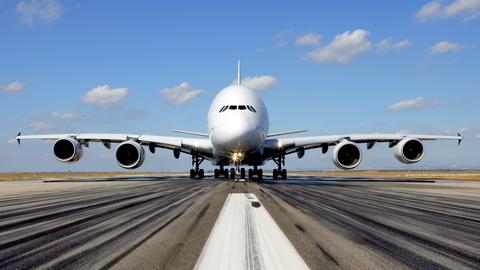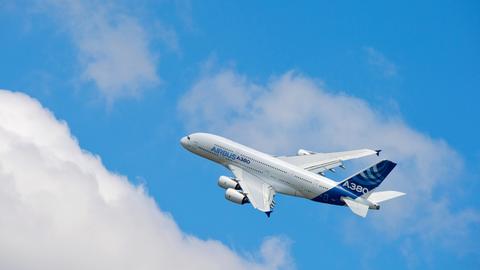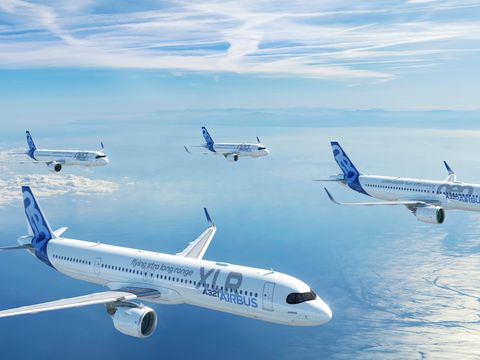Airbus A380
A380, a unique aircraft
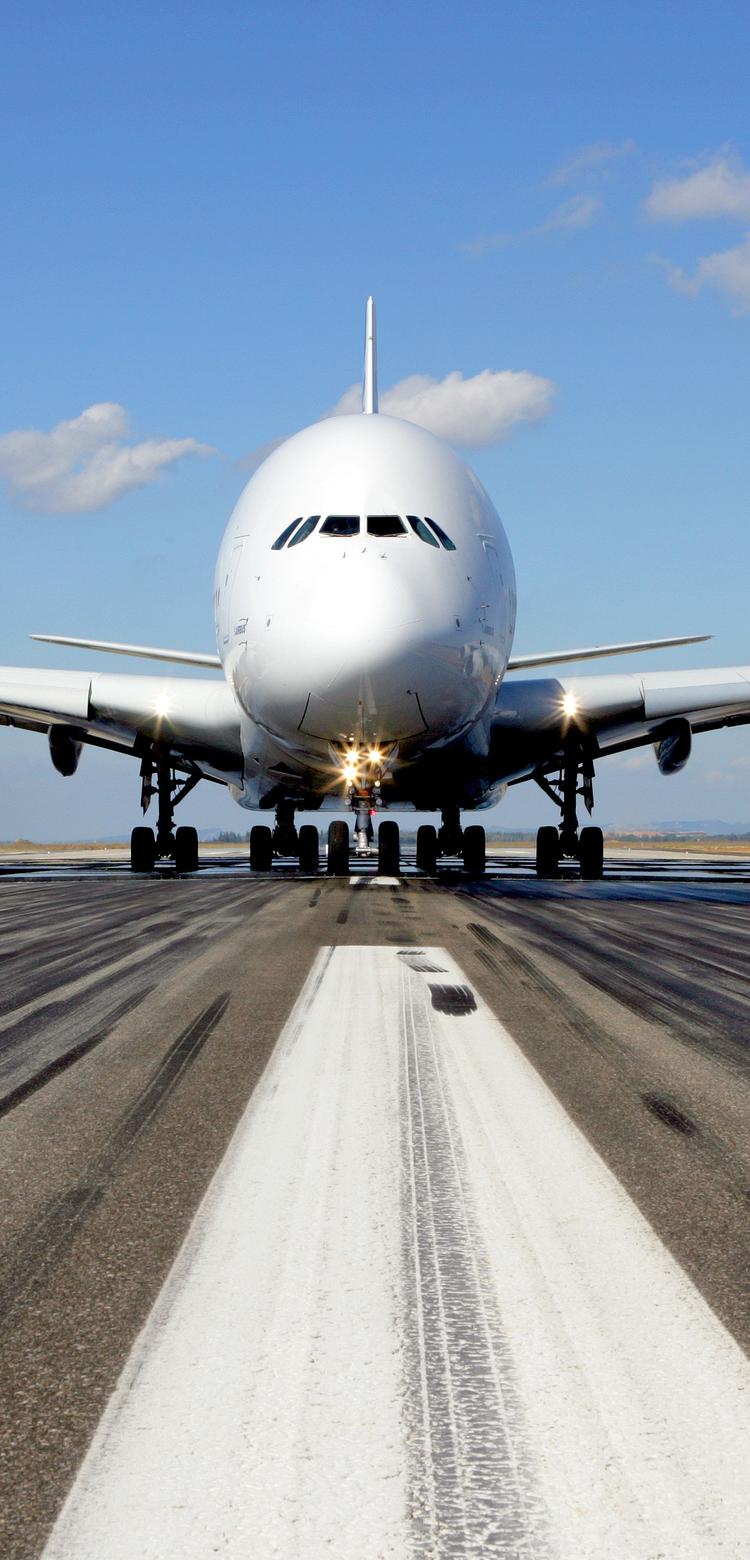
Flying for decades to come
AN ICONIC AIRCRAFT
Boarding an A380 is a unique experience that introduces passengers to superior standards of in-flight comfort. Combining the most advanced aviation technology and an inspired cabin design, Airbus is proud to have created an aircraft celebrated for its outstanding quality in every aspect.
Leading the industry in standards for innovation, experience and efficiency that carry through to today’s Airbus aircraft, the A380 is appreciated by passengers, pilots and crews alike.
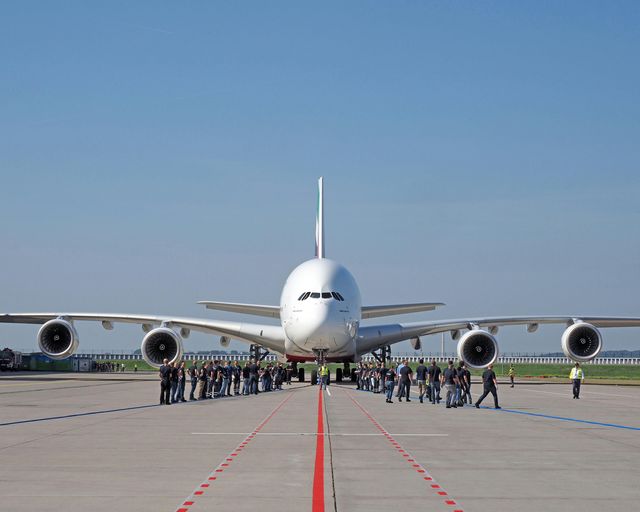
The A380 story
PIONEERING SPIRIT
The year 2025 marks the 20th anniversary of the A380’s maiden flight on 27 April 2005. This remarkable aircraft embodies Airbus’ pioneering spirit, introducing new technologies and designs that have helped Airbus to become a leading player in commercial aviation.
- The Airbus A380’s development began in the early 1990s as Airbus envisioned creating a double-deck aircraft.
- The A380 was the first new aircraft programme of the 21st century and opened a new standard in aviation.
- Since its entry into commercial service in 2007, the A380 has flown over 800,000 flights and carried more than 300 million passengers.
- The A380 set multiple records as the world’s largest passenger airliner — the only aircraft to offer more than 500 seats — and the only full-length double-deck jet airliner.
- Milestones include carrying over 800 passengers in an all-economy configuration and completing numerous long-haul flights, reshaping global aviation and defining ultra-long-range travel.
- Many of the technologies implemented on the A380 — including the over 380 patents filed for the aircraft ranging from noise-reducing acoustic panelling to weight-saving, safety-improving hydraulic systems — went on to become the norm in aircraft design and production.
- The A350’s Trent XWB engine flew for the first time under the wing of an A380 flight test aircraft.
- Airbus has selected the A380 as its future propulsion systems flight demonstrator.
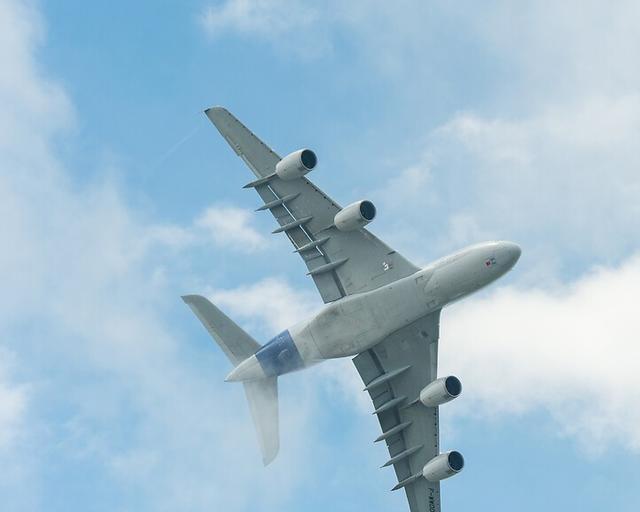
The A380: a unique aircraft
CHARACTERISTICS
The Airbus A380 is the largest passenger plane ever built, measuring 73 metres long with a wingspan of nearly 80 metres. It’s the only full-length double-deck aircraft, capable of carrying over 850 passengers in an all-economy layout. Known for its quiet engines, smooth ride and spacious cabins, the A380 offers an unmatched flying experience. Its unique design allows airlines to serve more passengers on long-haul routes with greater comfort and efficiency.
A380: technology and innovation
INNOVATION
Behind the A380's popularity is a catalogue of innovation that continues to influence commercial aircraft design. For example, this was the first time engineers had used a full digital mock up (DMU) to design an aircraft, setting a precedent. The A380 incorporated components made from carbon fibre reinforced plastic (CFRP), opening the way for their large-scale adoption on the A350. Key technological advancements include:
Key technological advancements
Materials
Modern materials reduce weight and improve fuel efficiency.
- Carbon Fiber Reinforced Polymer (CFRP) is a lightweight, strong composite used in the construction of the aircraft's wings and tail sections.
- Light, anti-corrosive AI-Li (Aluminum-Lithium) alloys are used in the fuselage.
Wings
Advanced wing design improves aerodynamics and fuel efficiency.
- Advanced aerodynamic shaping minimises drag and improves lift.
- Flexibility and adaptability to flight conditions allow for smoother rides and less fuel consumption, contributing to the A380’s impressive range.
Avionics
Sophisticated systems assist in route planning, fuel management and flight optimisation.
- An Integrated Modular Avionics (IMA) system allows the A380’s computers to monitor and control multiple aircraft systems.
- The Enhanced Ground Proximity Warning System (EGPWS) and Traffic Collision Avoidance System (TCAS) increase safety by providing pilots with real-time information on obstacles, terrain and nearby aircraft, improving situational awareness.
Aerodynamics
Aerodynamic design contributes to efficiency and performance.
- The A380’s supercritical wing shape reduces drag and increases fuel efficiency.
- Advanced aerodynamic surface control systems help smooth airflow over the aircraft. This includes the use of high-lift devices and slats that improve lift during takeoff and landing.
Systems
Innovative systems enhance passenger comfort and reduce environmental impact.
- Noise-reducing technologies in both the engines and airframe help decrease the aircraft’s noise footprint.
- Air-conditioning systems maintain a comfortable cabin environment with better air quality.
- Engines feature advanced noise and emissions-reduction technologies.
- Advanced engine control systems allow for more precise fuel management and emission reductions.
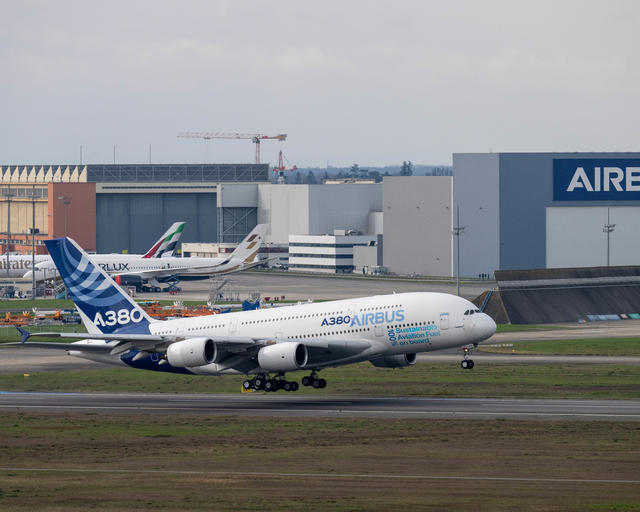
A380: responsibility and efficiency
RESPONSIBILITY
The Airbus A380 raised the bar for environmental standards in the aviation industry with its low fuel consumption per passenger surpassing equivalent aircraft in size and passenger capacity, which results in more efficient and cost-effective operations.
Its innovative technologies reduce noise levels, as well as reducing CO2 and NOx emissions, innovations that have been passed on to future aircraft generations.
The A380’s advanced aerodynamic design, use of modern materials like lightweight composites and sophisticated engine technology improve fuel efficiency and performance, consuming about 3.1 litres of fuel per 100 passenger-kilometers (0.75 gallons per 100 passenger-miles).
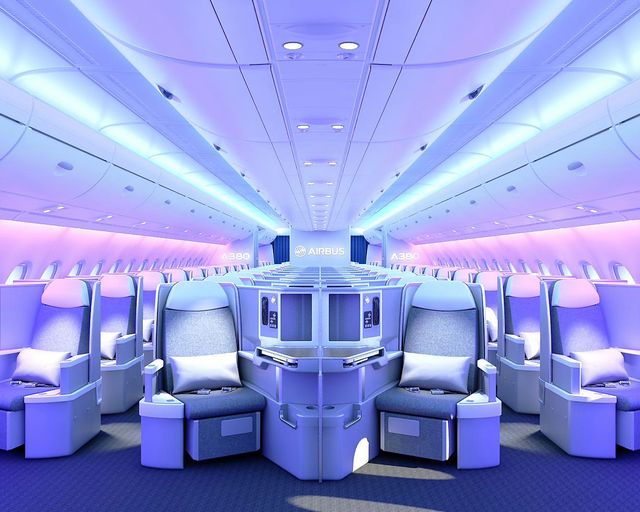
The A380: a passenger favorite
INSIDE THE A380
Boarding the double-decker A380 is a unique experience that introduces passengers to superior standards of in-flight comfort, from first class to economy.
The world’s largest and most spacious passenger aircraft is a passenger favorite. With its unique cabin architecture and the quietest cabin in the sky, the A380 interior maximises passenger comfort, with a wider cabin, wider seats, higher standing height and more personal space.
Every window seat has a window, and the cabin features LED mood lighting and air exchange every 2-3 minutes to improve passenger comfort.
No other aircraft can have customised cabins, with lounges, showers and luxurious suites. It is no wonder that the A380 continues to be a passenger favourite.
We love A380
A380 FAQs
What is the Airbus A380?
The Airbus A380 is the largest in-service commercial aircraft in the world, with a wide-body and double deck, providing maximum passenger comfort and a superior experience on long-haul flights.
When did the A380 enter into service?
The A380 entered service on October 25, 2007, with Singapore Airlines.
How big is Airbus A380?
The Airbus A380 is 73 metres long and 24 metres high, with a wingspan of 79.8 metres. The two passenger decks of the A380 have a total area of 550 m2, the same as three tennis courts (singles), or 1¼ basketball courts. The volume of the three decks (including cargo/baggage hold) is 1,570 m3, enough space for 35 million ping-pong balls.
How many passengers can the A380 carry?
The A380 is the only aircraft to offer more than 500 seats, certified to a maximum seating capacity of 853.
Where does the A380 fly?
The A380 primarily flies on long-haul international routes between major airports across the world.
How many hours can an Airbus A380 fly?
The A380 has a range of about 8,000 nautical miles (14,800 km), which translates to around 17 hours of flight time. For example, Emirates flies the A380 from London to Perth (Australia) via Dubai.
How many engines does the A380 have?
The A380 is powered by four Rolls-Royce Trent 900 engines or four Engine Alliance GP7000 engines.
How many A380 were built?
251 A380s have been delivered to 14 customers.
What airlines operate the Airbus A380?
All Nippon Airways, Asiana, British Airways, Etihad, Korean Air, Lufthansa, Qantas, Qatar Airways and Singapore Airlines operate the Airbus A380. The largest A380 operator, Emirates, is embarking on a four-year cabin refit for its entire fleet, in partnership with Airbus. The refit will introduce a new, standardised level of comfort onboard the aircraft.
Why has the Airbus A380 been a game-changer in aviation?
The A380 is considered a game-changer due to its ability to carry more passengers and provide greater efficiency on high-demand long-haul routes. Its technological innovations continue to inform the development of new aircraft, including the use of digital mockups in the design phase and carbon fibre reinforced plastic (CFRP) components, which were adopted on a large scale on the A350.
Discover more about A380
-
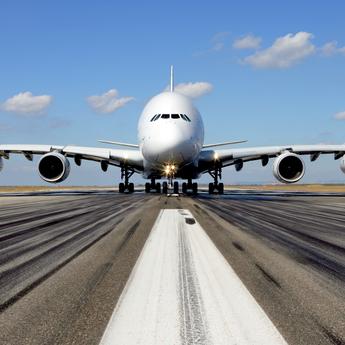
Happy 20th anniversary, A380!
Web Story
Commercial Aircraft
It’s twenty years since the A380’s maiden flight. Behind the aircraft’s enduring appeal lies a catalogue of innovation that continues to influence airliner design. -
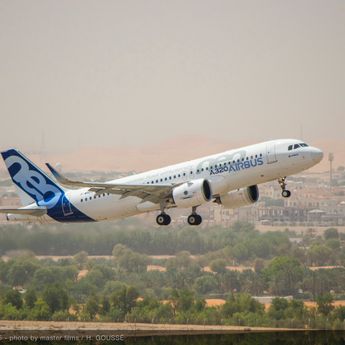
Soft Go-Around: Enhancing Flight Safety
Web Story
Safety
-
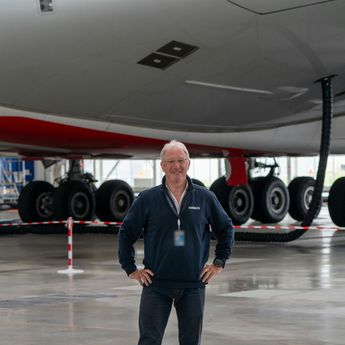
Meet André, technical solutions manager at Airbus Commercial Aircraft
Web Story
Commercial Aircraft
-

Could an open fan engine cut carbon emissions for more sustainable aviation?
Web Story
Innovation
-
Airbus and CFM International launch a flight test demonstrator for advanced open fan…
Press Release
Sustainability




